Manaiyadi Sastram: A Comprehensive Guide to Staircase Vastu
Ancient Hindu architecture, particularly Manaiyadi Sastram, offers a plethora of guidelines for constructing staircases. Implementing Vastu principles in staircase construction not only facilitates smooth movement but also ensures a positive energy flow within the home. Moreover, it minimizes the chances of accidents, both major and minor. This guide will help you understand the dos and don’ts of building staircases in your home according to Manaiyadi Sastram.
What is Staircase Vastu?
Manaiyadi Sastram, an ancient Hindu architectural science, prescribes several rules for constructing staircases. Utilizing Vastu principles during construction generally ensures easy movement and promotes a positive energy flow within the house. This also reduces the likelihood of accidents.
Number of Steps in a Staircase According to Vastu
Always Choose Odd Numbers
The number of steps in a staircase should always be odd (15, 17, 19, or 21). The count should never end in ‘0’. Why? Because an average person tends to start climbing stairs with their right foot. To end on the right foot, the number of steps must be odd.

Direction of Staircase According to Vastu
Best Direction for Staircases Inside the House
For staircases inside the house, the southwest part is considered the best choice according to Vastu experts. The south and west parts are the next best options. The staircase should start from the north and go towards the south or start from the east and go towards the west. Internal staircases should not be located in the center of the house.
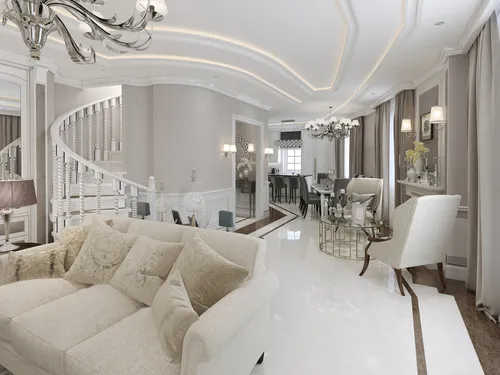
Best Direction for Staircases Outside the House
For external staircases, the best directions according to Vastu are:
- Southeast, facing east.
- Southwest, facing west.
- Southwest, facing south.
- Northwest, facing north.
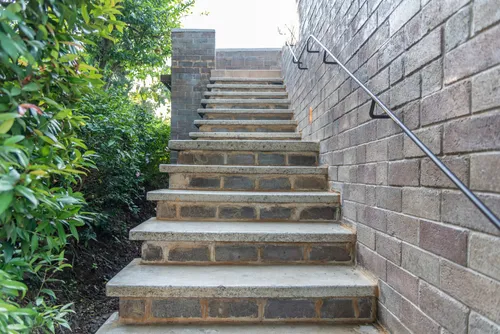
Avoid placing staircases in the northeast corner, whether inside or outside. Additionally, staircases near the entrance can create an imbalance.
Other Factors Affecting Staircase Vastu
Location of the Staircase
Homeowners who rent out the upper floor while living on the ground floor should ensure that there are no staircases in front of the main entrance. Vastu experts believe this can lead to financial losses.
Starting Point of the Staircase
Staircases inside the house should not start or end in the kitchen, storeroom, or prayer room. Stairs leading to the basement or cellar should not be a continuation of the stairs leading to the upper floors.
Visibility of the Staircase
Internal staircases should be placed in a way that they are not directly visible to guests. It is also recommended to have doors at the beginning and end of the staircase.
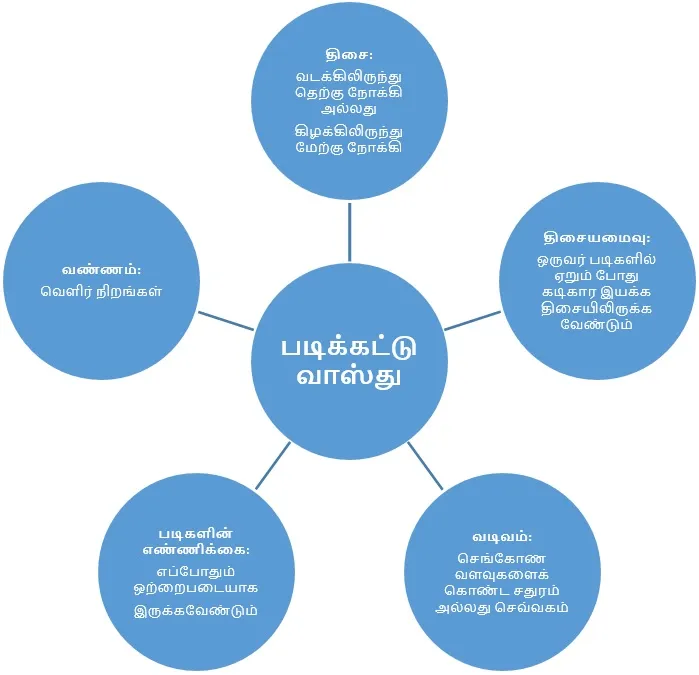
Direction of Steps in a Staircase
The direction of the steps in your staircase can have a lasting impact on your health. Therefore, it is crucial to follow Vastu rules for the direction of the steps. According to Vastu, when we ascend the stairs, it should always be in a clockwise direction. In other words, the person using the stairs should move from north to south or east to west. Vastu experts believe that placing stairs in an anti-clockwise direction can hinder business growth.
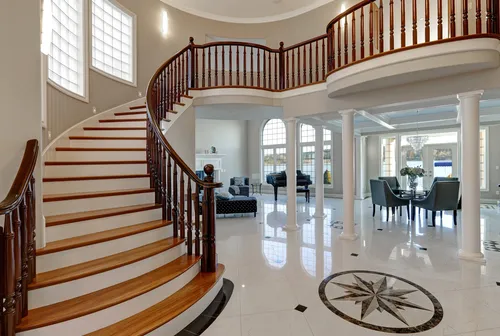
Shape of the Staircase According to Vastu
Square and rectangular staircases with right-angle turns are considered the best for both internal and external staircases according to Vastu. Very steep or high staircases can make a person feel extremely tired every time they use them. Therefore, experts advise homeowners to avoid spiral staircases.
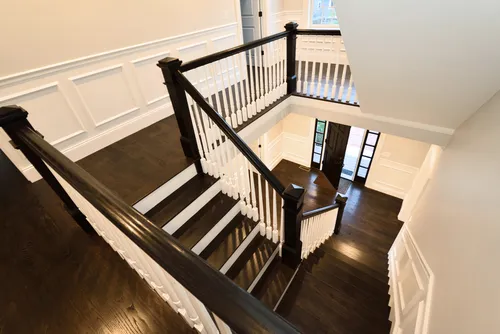
Colors for Staircases According to Vastu
Your staircase should be well-lit at all times of the day. If you choose dark, dense colors for your staircase, it will naturally give a dark appearance, which you may not like. Therefore, always opt for light shades when painting staircases or handrails. Avoid dense colors, especially red and black, as these colors generate negative energy. You can decorate the walls adjacent to the staircase with wallpaper, but it is preferable to avoid very dark colors.
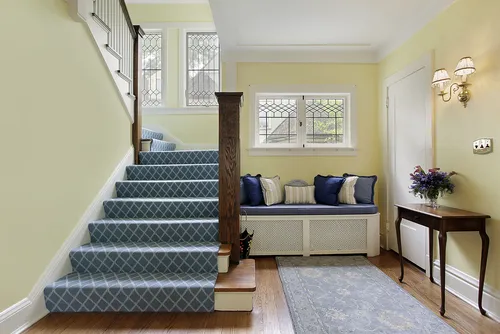
Utilizing the Space Under the Staircase
In small homes, the space under the staircase is often used to build a small kitchen, bathroom, or prayer room. Sometimes, a small workspace is created under the stairs, which should be avoided. Vastu experts suggest using the space under the staircase only for storing household items. Do not place valuable items like money or jewelry in this area. Avoid using this space to store discarded items or worn-out shoes.
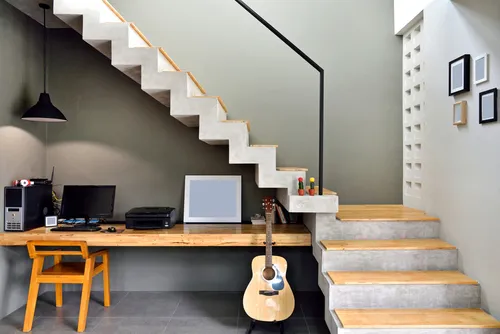
Vastu Rules for Decorating the Staircase
According to Vastu rules, do not decorate the walls of the staircase with family photographs, as this can cause disagreements among family members and harm their health. Instead, decorate the walls with paintings of blooming flowers, lush green landscapes, mountains, or waterfalls. Place ceramic pots with plants in the area under the staircase. According to Vastu, hanging mirrors in front of or under the staircase is unfavorable as it attracts negative energy into the house. Do not place a water fountain or fish tank under the staircase. The staircase area should be well-lit.
Vastu Rules for Staircase Handrails
Handrails or railings ensure the safety of people using the stairs. They can be modern in design but should primarily provide comfort when ascending or descending. According to Vastu, choose marble or stone handrails for staircases in the southwest direction. For staircases in the west, opt for metal handrails, and for staircases in the east and south, use wooden handrails.

Vastu Rules for Utilizing the Space Adjacent to the Staircase
Vastu experts advise against displaying pictures of deities or family members on the walls adjacent to the staircase. However, Vastu rules do not prohibit using these wall areas to display fine art. If you wish to decorate this area with wallpaper, it is best to use light colors. Your staircase should be bright and well-lit. Light-colored wallpaper ensures that the area remains bright at all times.

Major Staircase Defects
- Staircase in the northeast corner
- Spiral staircases
- Staircases that circle the building
- Round and circular staircases
- Broken steps
- Dark, dense-colored staircases
- Wobbly or creaky staircases
Impact of Staircase Vastu Defects
If there are any Vastu defects in the staircases, the residents of the house may face various losses, including physical, mental, and financial. For example, a staircase in the northeast corner or ‘Eshan Kona’ is considered a major Vastu defect. Residents with a staircase in this corner may suffer from severe diseases related to the brain, kidneys, or heart.
Important Facts About Staircase Design
What is Rise in a Staircase?
In a staircase, the rise refers to the vertical distance from the top of one tread to the top of the next tread. The International Residential Code recommends a maximum rise of 7 ¾ inches.
What is Run in a Staircase?
The run is the horizontal distance from the front of one tread to the front of the next tread. It should not be confused with the tread depth. The International Residential Code recommends a minimum run of 10 inches.
Recommended Rise and Run Height According to Vastu
To ensure maximum comfort for users, the rise and run height should be balanced at 18 inches.
Key Points to Remember About Staircase Vastu
- The rise of a staircase should be between 4 inches and 75 inches, while the tread width should be between 10 and 11.25 inches.
- Inside the house, if the width of the stairs is very high, you can have staircases without handrails. For external staircases, handrails are mandatory if they have more than five steps.
- Temporary staircases are not a good idea as they can be distracting and very dangerous.
Poor Staircase Design According to Vastu
Staircases have evolved from being merely a tool to help us move up and down to becoming a significant design element in modern homes. Unfortunately, sometimes homeowners create elaborate staircase designs to impress visitors, neglecting their basic functional principles. This can turn the act of climbing or descending stairs into a painful or complicated task. The staircase shown below is an example of poor design.
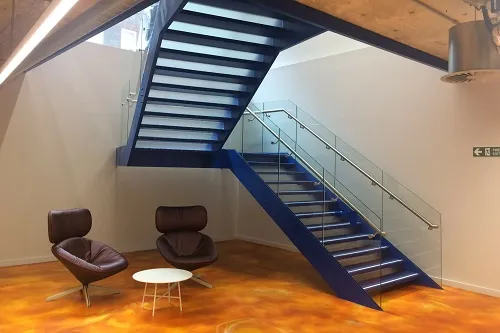
Remember, a poorly designed staircase can negate all the positive effects created in other parts of the house using Vastu principles. According to Vastu experts, placing a staircase in the center of the house can lead to various complications during pregnancy.
Impact of Vastu Defects in Staircases
Ignoring Vastu principles while constructing staircases is not advisable. Although staircases play a crucial role in the overall construction plan, they are often overlooked during house design. Anything related to the movement of people within a house can significantly impact the health, well-being, and daily activities of the residents. Therefore, staircases play a vital role in the functionality of a household. Structural or other defects in staircases can lead to major or minor accidents. Design flaws can make movement within the house cumbersome and inconvenient.
“Even if you are not a firm believer in Vastu, you must acknowledge that poorly planned staircases can lead to negative consequences. They not only hinder your movement but also cause accidents,” says Rajat Kadri, an architect based in Delhi.
Along with other seemingly important parts of the house, staircases should also be given due attention to Vastu rules, as the flow of positive energy in your home depends on the combined effect of various parts of the house, including the staircase.
Best Flooring Materials for Staircases
Carpet Flooring

Carpet Runners

Vinyl Plank Flooring
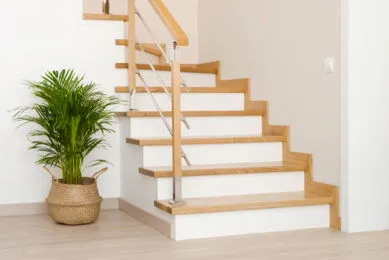
Hardwood Flooring
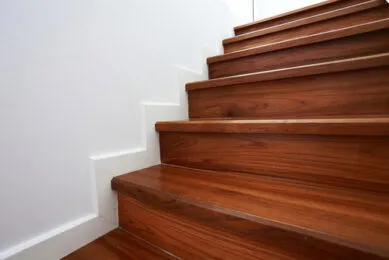
Marble Flooring
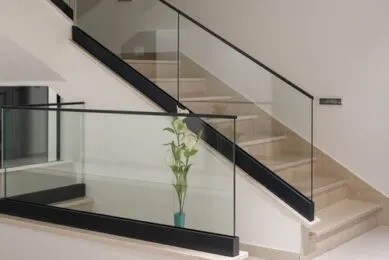
Epoxy Coated Steps
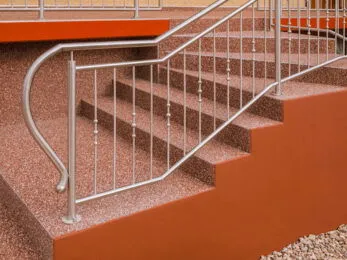
Steel Steps
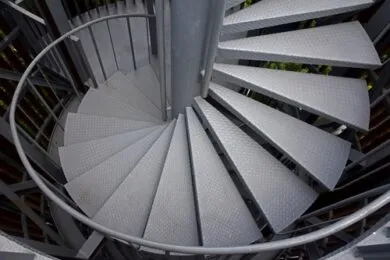
Conclusion
Incorporating Manaiyadi Sastram principles in staircase design is not just about aesthetics; it’s about ensuring the well-being and safety of the residents. By following these guidelines, you can create a harmonious living environment that promotes positive energy flow and minimizes the risk of accidents. So, the next time you plan to build or renovate your staircase, keep these Vastu tips in mind for a balanced and prosperous home.
